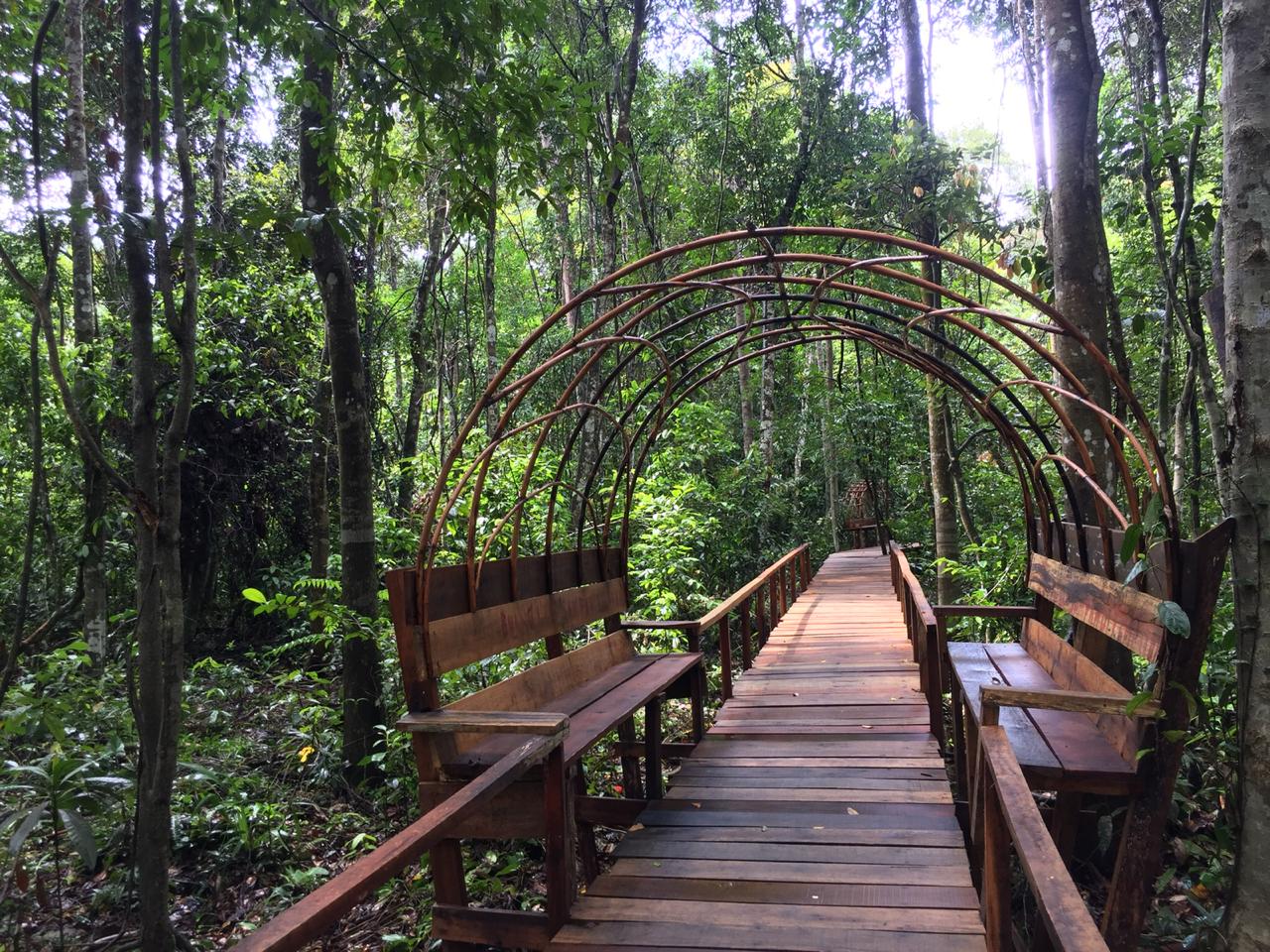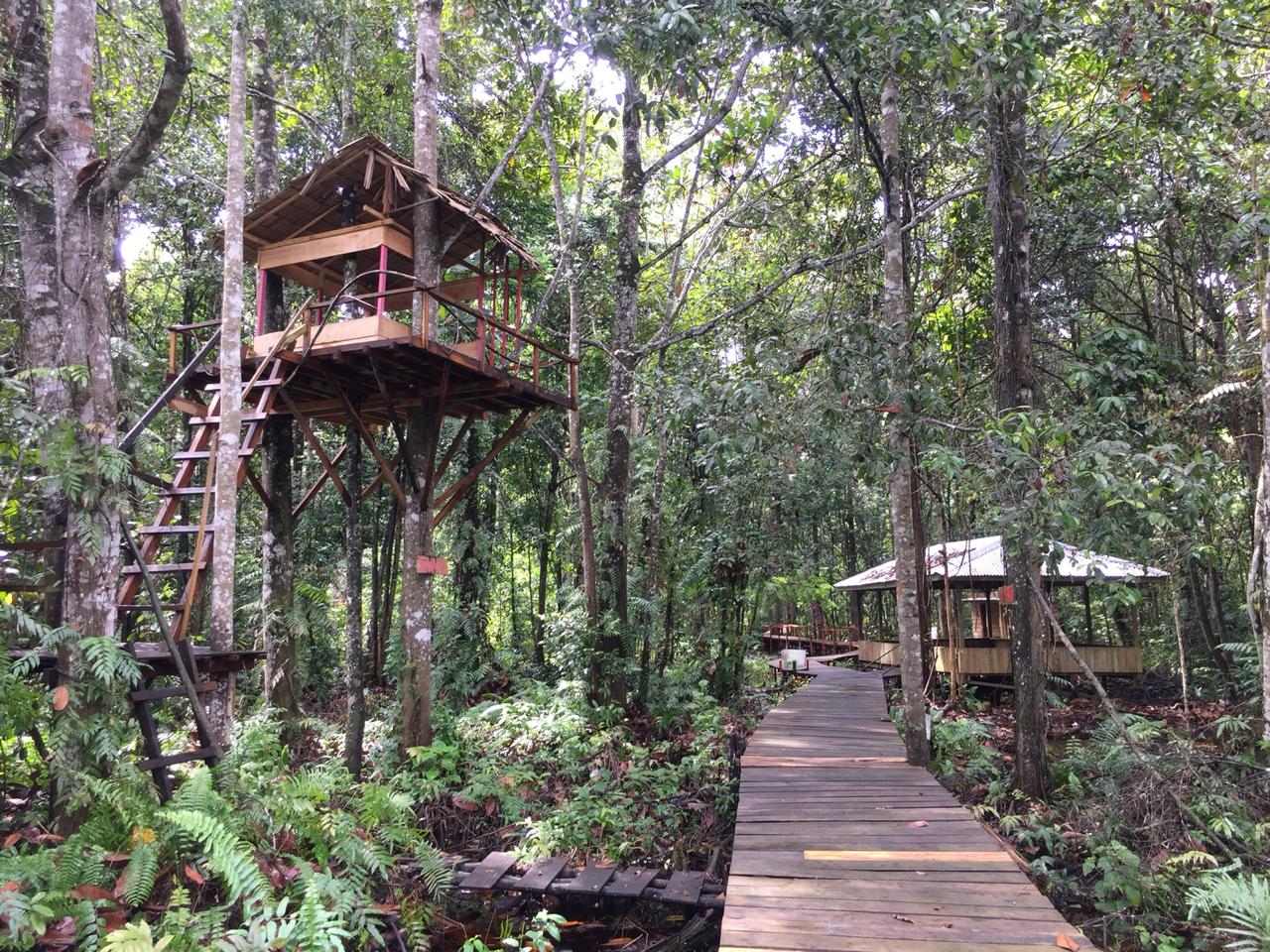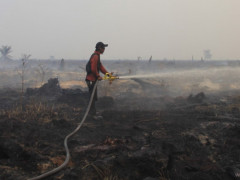Bagan Melibur Village's Efforts to Suppress Peat Fires using the Village Regulation concerning Ecosy
By ZamzamiThe Challenges of Pematang Rahim Peat Ecotourism Development

The biodiversity of Pematang Rahim's peat forest always attracts students and researchers. Fauzi said that researchers visit there almost every month. "Researchers from abroad have also come here," he said.
Pematang Rahim's peat forest covers an area of 1,185 hectares. The area is part of the Sungai Buluh Peat Conservation Forest which covers an area of 17,721 hectares. On 26 October 2017, Pematang Rahim residents received a permit to manage Social Forestry under the village forest scheme from the Ministry of Environment and Forestry. On 17 December 2018, President Joko Widodo handed over the permit to local residents to preserve the peat forest.
At the end of 2019, the Village Forest Management Agency (LPHD) made Pematang Rahim peatland into an ecotourism and edutourism destination. "Now children can see real trees, not only know them from books," said Fauzi.
Ecotourism supporting facilities are neglected
The Pematang Rahim peat forest is known as the Kebon Sari Ecotourism Park. In 2019, the peat ecotourism park was very popular as a holiday destination for Jambi residents. Visitors can visit the park for free. That’s why more and more people are interested in visiting the peat ecotourism spot. "So that Pematang Rahim can become more famous," said Fauzi.
At that time, no one would have thought that the COVID-19 pandemic would occur. The manager just realized then that they needed money to maintain the facilities when more and more visitors came to visit the park, so it was important to get income from the visitors. But they couldn’t change the free admission policy, so they didn’t have any budget for repairs. The residents worked together to repair some of the broken facilities. They had not managed to repair much when the pandemic entered Indonesia in March 2020 and the situation got complicated.
The government used the village fund that was previously allocated for repairing the facilities to provide direct cash assistance for the people affected by the pandemic.
They did not continue the maintenance of the ecotourism facilities. The management of the Tourism Awareness Group also become chaotic because the pandemic has made things even more difficult. The Tourism Awareness Group didn’t do any activities for five months. After that, the management of the Tourism Awareness Group was reorganized in August 2020. "The Tourism Awareness Group hopes that ecotourism can be developed again," Fauzi said.
Fauzi took Pantau Gambut to explore the Kebon Sari Ecotourism Park for a while. The forest area was actually close to the village but in order to get there faster, Pantau Gambut rode a motorbike. It was only a five-minute ride from the settlements to the entrance of the ecotourism area.
After we arrived, we continued walking through the forest on 150-meter long wooden planks. Fauzi repeatedly reminded me to keep an eye on my footsteps.
"Watch out for some rotten planks," he said, explaining the type of wood used to make the pathway. The planks were made of racuk wood. Fauzi said that racuk wood rots quickly. "The poles were made of bulian wood, so they are still durable.”
After walking past the entrance to the ecotourism area, I saw an abandoned tree house. The wooden house, which was on a three-meter-tall tree, was weathered and damaged. Not far from there, there was a 6x10 meter hut. Fauzi said that it was usually used by family visitors who wanted to relax for a while.
“The past year has been quiet. We did close the park from tourists because the boardwalk is also dangerous," he said. But he added that researchers still come to visit.
Trees left from the 1997 fire
Referring to data from the Peatland Restoration Agency in the 2017 mapping report, there are 300 plant species in the peat swamps of mainland Sumatra. However, that number has decreased. The Pematang Rahim peat forest fires in 1997 have significantly reduced the number of plant species. Fauzi explained that before the fire, there was a lot of black rattan.
"But now the black rattan has disappeared," said Fauzi.
He memorized the remaining trees in the peat swamp forest. Fauzi said that there were dozens of tree species although he did not specify the numbers. "The meranti tree is the most abundant plant species in this forest," he said.
Fauzi understood that the peat swamp forest has preserved biodiversity. Peat forests also help filter pollutants and store carbon. "If we don’t protect this forest, what will be left for our children and grandchildren?" he said.
The Head of the Village Forest Management Group, Suryani, explained that the fire had destroyed various large trees in the Pematang Rahim peatland. "Now it's hard to find trees with one-meter diameter," she said.
Referring to Global Forest Watch data, the tree cover loss in Jambi was 302,000 hectares during 2017-2020. The number of tree cover loss is equivalent to 1.21 gigatons of carbon dioxide (CO2) emissions.
Learn about the peat ecosystem
Head of Pematang Rahim Village, Muhammad Dong, was determined to develop the ecotourism park again, but the pandemic has brought that plan to a halt. "We plan to do it in 2022. We allocate the budget from village funds," he said.
Muhammad plans to build a one-kilometer-long wooden boardwalk into the forest. The ecotourism will be managed as a Village Owned Enterprise. "This village forest can be developed as peat tourism in Tanjung Jabung Timur," he said. The plan is also an effort to protect the forest.
Muhammad wants to propose Pematang Rahim peat forest as a green open space. "Currently we are preparing the spatial plan proposal," he said. This is because Pematang Rahim Village is considered as a city area in the Mendahara Ulu Subdistrict Spatial Plan.
Secretary of the Pematang Rahim Village Forest Tourism Awareness Group, Cindy Amara, said that it is important for children to learn about the peat ecosystem since elementary school. When we can develop the ecotourism park again, we will put identification signs for the trees along the trekking path.
"We will also have a peat museum," she said.
Cindy explained that the museum will be a wooden structure housing a forest diorama, where children can learn various information about peat, including how peat is formed. "Everything about peat, the depth, types of plants and animals," she said.





